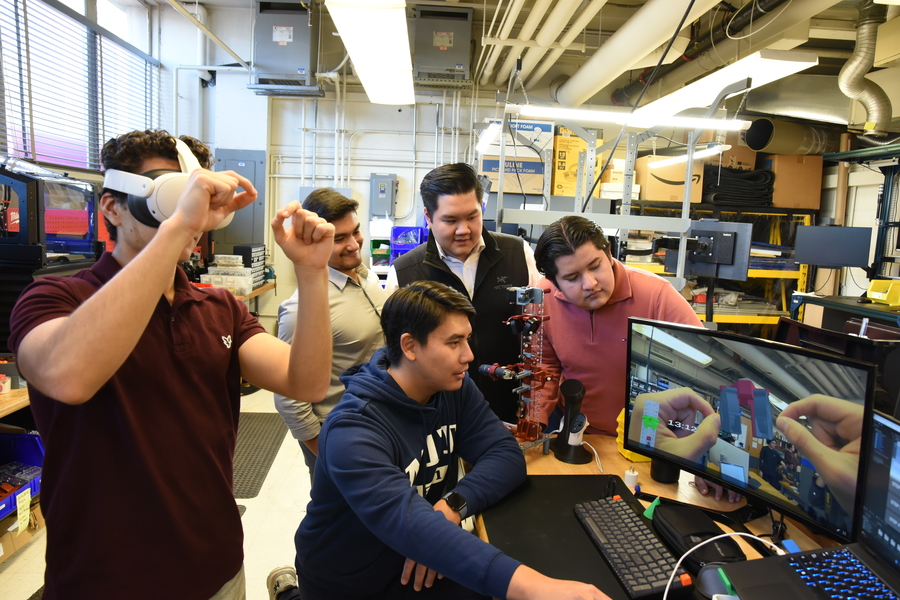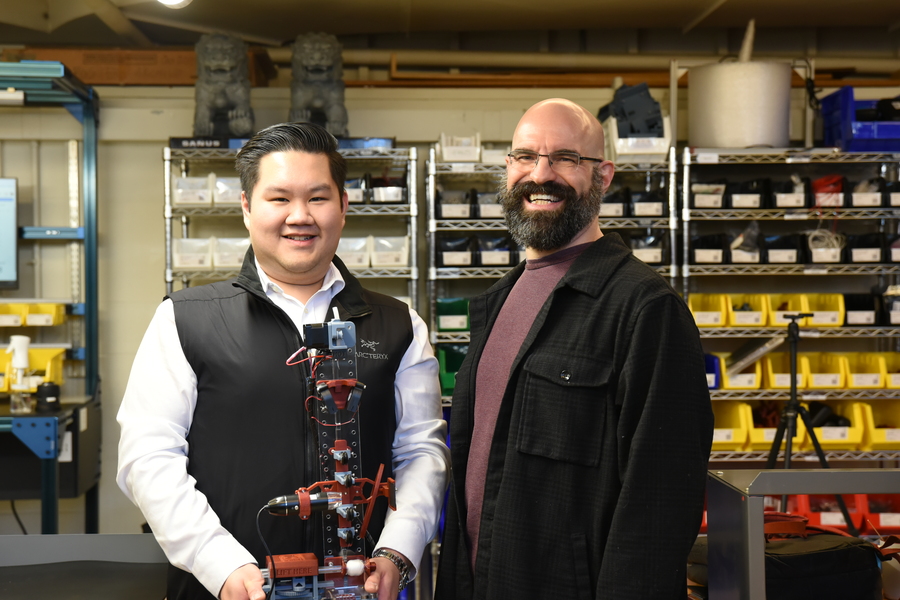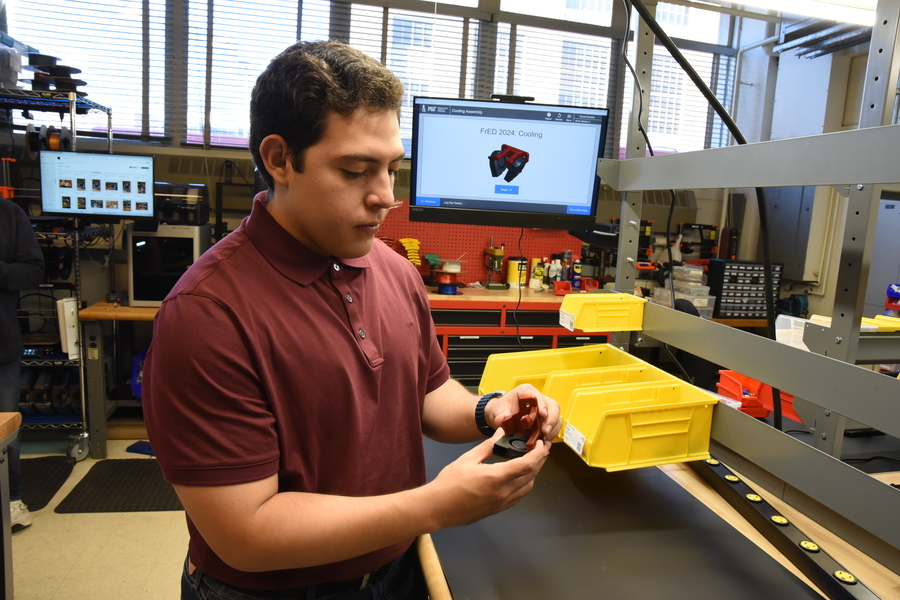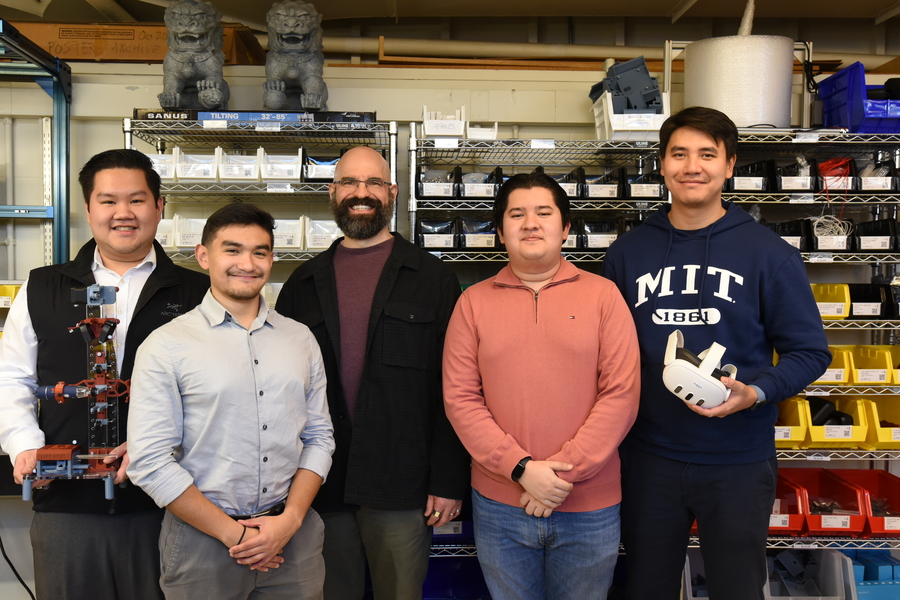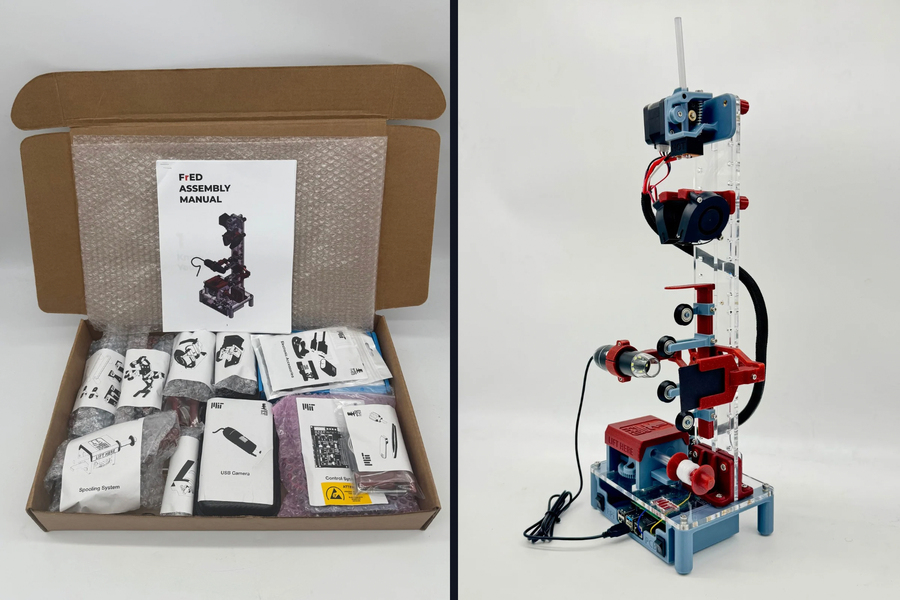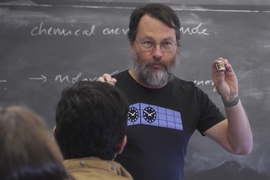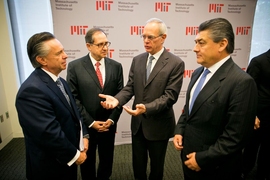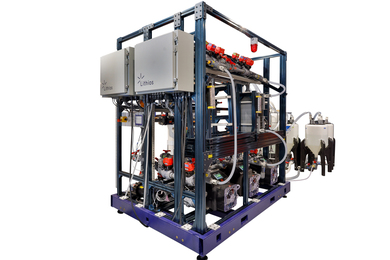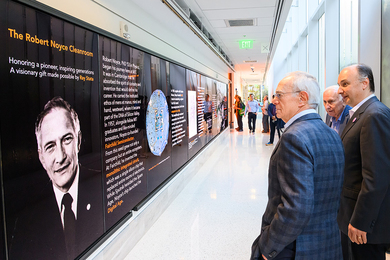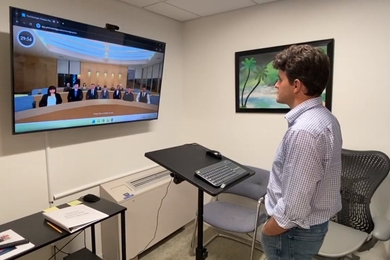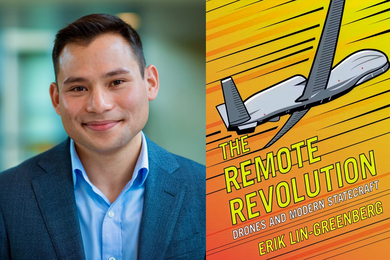For over a decade, through a collaboration managed by MIT.nano, MIT and Tecnológico de Monterrey (Tec), one of the largest universities in Latin America, have worked together to develop innovative academic and research initiatives with a particular focus in nanoscience and nanotechnology and, more recently, an emphasis on design and smart manufacturing. Now, the collaboration has also expanded to include undergraduate education. Seven Tec undergrads are developing methods to manufacture low-cost, desktop fiber-extrusion devices, or FrEDs, alongside peers at MIT in an “in-the-lab” teaching and learning factory, the FrED Factory.
“The FrED Factory serves as a factory-like education platform for manufacturing scale-up, enabling students and researchers to engage firsthand in the transition from prototype development to small-scale production,” says Brian Anthony, MIT.nano associate director and principal research scientist in the MIT Department of Mechanical Engineering (MechE).
Through on-campus learning, participants observe, analyze, and actively contribute to this process, gaining critical insights into the complexities of scaling manufacturing operations. The product of the FrED Factory are FrED kits — tabletop manufacturing kits that themselves produce fiber and that are used to teach smart manufacturing principles. “We’re thrilled to have students from Monterrey Tec here at MIT, bringing new ideas and perspectives, and helping to develop these new ways to teach manufacturing at both MIT and Tec,” says Anthony.
The FrED factory was originally built by a group of MIT graduate students in 2022 as their thesis project in the Master of Engineering in Advanced Manufacturing and Design program. They adapted and scaled the original design of the device, built by Anthony’s student David Kim, into something that could be manufactured into multiple units at a substantially lower cost. The resulting computer-aided design files were shared with Tec de Monterrey for use by faculty and students. Since launching the FrED curriculum at Tec in 2022, MIT has co-hosted two courses led by Tec faculty: “Mechatronics Design: (Re) Design of FrED,” and “Automation of Manufacturing Systems: FrED Factory Challenge.”
New this academic year, undergraduate Tec students are participating in FrED Factory research immersions. The students engage in collaborative FrED projects at MIT and then return to Tec to implement their knowledge — particularly to help replicate and implement what they have learned, with the launch of a new FrED Factory at Tec de Monterrey this spring. The end goal is to fully integrate this project into Tec’s mechatronics engineering curriculum, in which students learn about automation and robotics firsthand through the devices.
Russel Bradley, a PhD student in MechE supervised by Anthony, is the project lead of FrED Factory and has been working closely with the undergraduate Tec students.
“The process of designing and manufacturing FrEDs is an educational experience in itself,” says Bradley. “Unlike a real factory, which likely wouldn’t welcome students to experiment with the machines, the FrED factory provides an environment where you can fail and learn.”
The Tec undergrads are divided into groups working on specific projects, including Development of an Education 4.0 Framework for FrED, Immersive Technology (AR) for Manufacturing Operations, Gamifying Advanced Manufacturing Education in FrED Factory, and Immersive Cognitive Factory Twins.
Sergio Siller Lobo is a Tec student who is working on the development of the education framework for FrED. He and other students are revising the code to make the interface more student-friendly and best enable the students to learn while working with the devices. They are focused particularly on helping students to engage with the topics of control systems, computer vision, and internet of things (IoT) in both a digital course that they are developing, and in directly working with the devices. The digital course can be presented by an instructor or done autonomously by students.
“Students can be learning the theory with the digital courses, as well as having access to hands-on, practical experience with the device,” says Siller Lobo. “You can have the best of both ways of learning, both the practical and the theoretical.”
Arik Gómez Horita, an undergrad from Tec who has also been working on the education framework, says that the technology that currently exists in terms of how to teach students about control systems, computer vision, and IoT is often very limited in either its capability or quantity.
“A key aspect of the value of the FrEDs is that we are integrating all these concepts and a module for education into a single device,” says Gómez Horita. “Bringing FrED into a classroom is a game-changer. Our main goal is trying to put FrED into the hands of the teacher, to use it for all its teaching capabilities.”
Once the students return to Tec de Monterrey with the educational modules they’ve developed, there will be workshops with the FrEDs and opportunities for Tec students to use their own creativity and iterate on the devices.
“The FrED is really a lab in a box, and one of the best things that FrEDs do is create data,” says Siller Lobo. “Finding new ways to get data from FrED gives it more value.”
Tec students Ángel Alarcón and André Mendoza are preparing to have MIT students test the FrED factory, running a simulation with the two main roles of engineer and operator. The operator role assembles the FrEDs within the workstations that simulate a factory. The engineer role analyzes the data created on the factory side by the operator and tries to find ways to improve production.
“This is a very immersive way to teach manufacturing systems,” says Alarcón. “Many students studying manufacturing, undergraduate and even graduate, finish their education never having even gone to an actual factory. The FrED Factory gives students the valuable opportunity to get to know what a factory is like and experience an industry environment without having to go off campus.”
The data gained from the workstations — including cycle time and defects in an operation — will be used to teach different topics about manufacturing. Ultimately, the FrED factory at Tec will be used to compare the benefits and drawbacks of automation versus manual labor.
Bradley says that the Tec students bring a strong mechatronics background that adds a lot of important insights to the project, and beyond the lab, it’s also a valuable multicultural exchange.
“It’s not just about what the students are learning from us,” says Bradley, “but it’s really a collaborative process in which we’re all complementing each other.”

